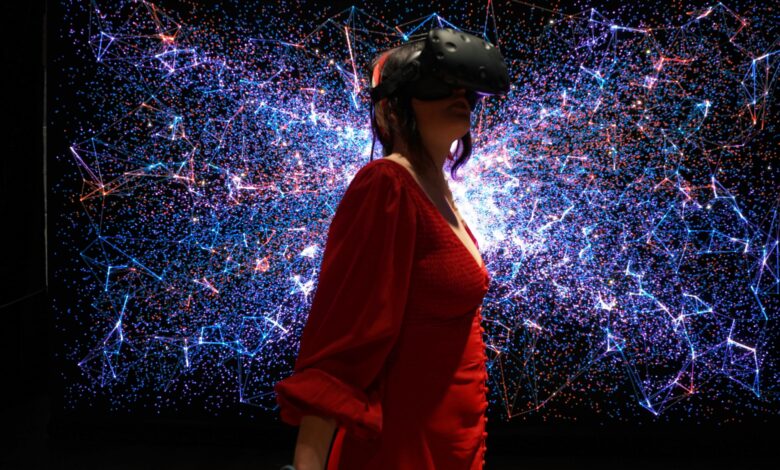
Virtual Reality (VR) is no longer just a tool for gamers or tech enthusiasts. It’s rapidly making its mark in the business world, revolutionizing how companies operate, collaborate, and enhance productivity. From remote meetings to immersive training programs, VR is reshaping traditional business practices and offering innovative solutions for challenges faced in modern workplaces. Here’s how Virtual Reality is making a difference in the business realm.
1. Transforming Remote Collaboration
The shift towards remote work has been one of the most significant changes in the business landscape over the past decade. While tools like video conferencing and chat apps have become standard, Virtual Reality is taking remote collaboration to the next level. VR platforms allow team members to meet in a virtual space that mimics a real-world environment, making remote interactions feel more engaging and interactive.
In a VR meeting, participants can interact with 3D models, share documents in a virtual space, and engage in more dynamic discussions compared to traditional video calls. This immersive experience helps bridge the gap between remote workers and those in the office, fostering a stronger sense of presence and collaboration. For instance, a design team can review and tweak a new product prototype together in a virtual environment, making real-time adjustments and brainstorming more effectively.
2. Enhancing Training and Development
Training new employees or upskilling existing ones can be a costly and time-consuming process. Virtual Reality offers a cost-effective solution by providing realistic simulations for training purposes. VR training programs can create lifelike scenarios that allow employees to practice skills in a controlled environment.
For example, in the healthcare industry, VR can be used to simulate surgeries or medical procedures, giving trainees hands-on experience without any risk to real patients. In retail, employees can use VR to practice customer service scenarios, improving their skills in handling various situations. This kind of training not only accelerates the learning process but also enhances retention by providing a more engaging and interactive experience.
3. Improving Product Design and Development
Product design and development can benefit greatly from the use of Virtual Reality. Traditionally, creating prototypes and testing designs involved significant time and resources. With VR, designers can create and visualize products in a virtual environment, making it easier to test and iterate on ideas before physical production begins.
Using VR, designers can walk through a 3D model of a new product, assess its functionality, and make adjustments in real-time. This not only speeds up the design process but also reduces the risk of costly errors and revisions. Additionally, VR enables cross-functional teams to collaborate more effectively by providing a shared virtual space where they can review and refine designs together.
4. Boosting Employee Engagement and Well-being
Employee engagement and well-being are crucial for maintaining a productive workforce. Virtual Reality offers unique ways to enhance these aspects of the workplace. For example, VR can be used to create virtual environments for relaxation and stress relief, helping employees to unwind and recharge.
Some companies are experimenting with VR-based wellness programs, offering virtual experiences that promote mindfulness and relaxation. These programs can help reduce stress levels and improve overall employee satisfaction. Additionally, VR can be used to facilitate team-building activities and events, creating a more inclusive and engaging workplace culture, even for remote teams.
Conclusion
Virtual Reality is transforming the business world in remarkable ways, enhancing productivity and collaboration across various industries. From improving remote meetings and training programs to revolutionizing product design and boosting employee engagement, VR is proving to be a valuable asset in modern business practices.
As technology continues to advance, the potential applications of Virtual Reality in business are likely to expand even further. Companies that embrace VR and integrate it into their operations can gain a competitive edge, streamline their processes, and create a more engaging and productive work environment. The future of business may very well be shaped by the immersive possibilities of Virtual Reality, making it an exciting time for innovation in the workplace.




